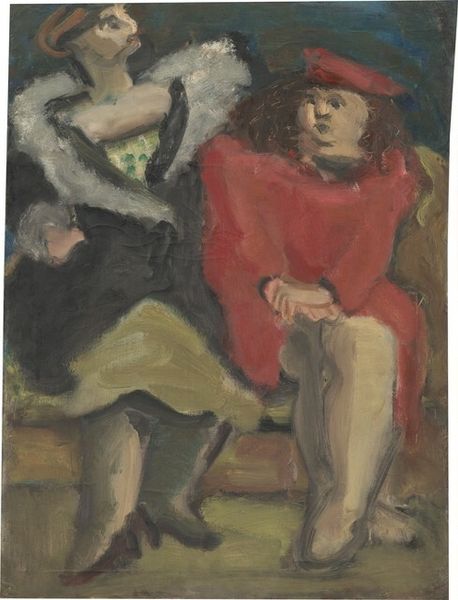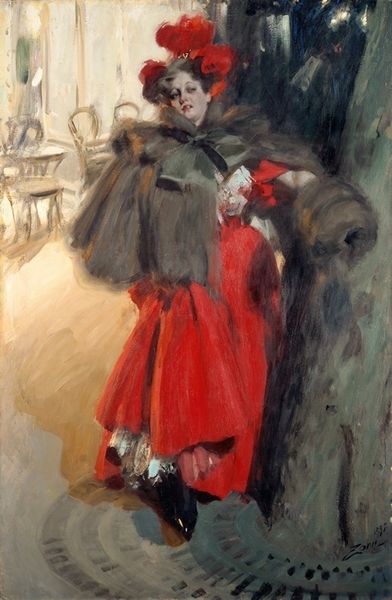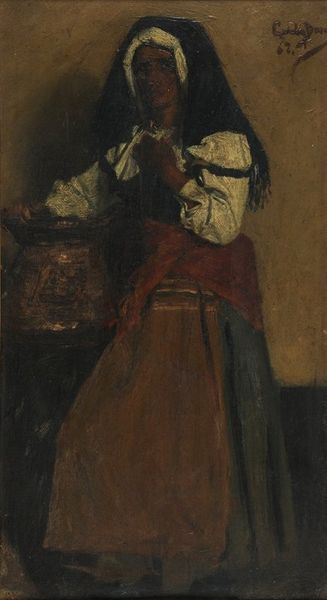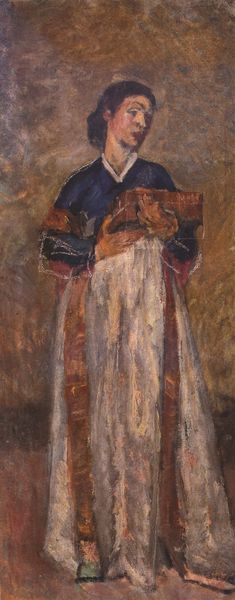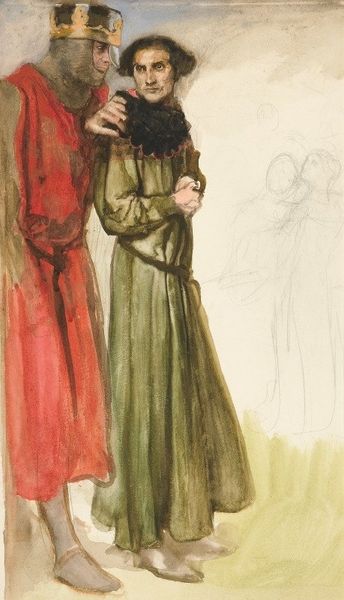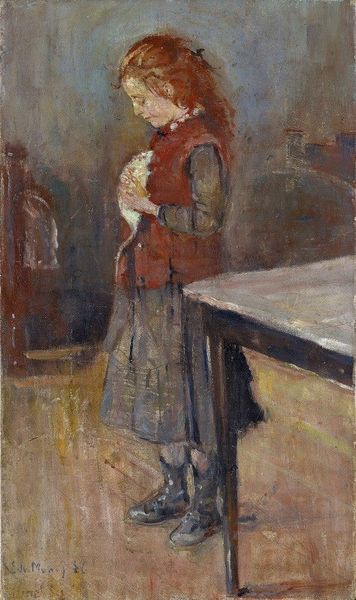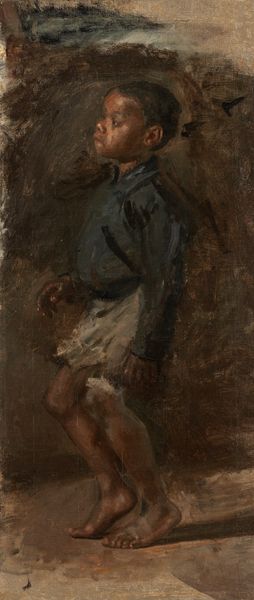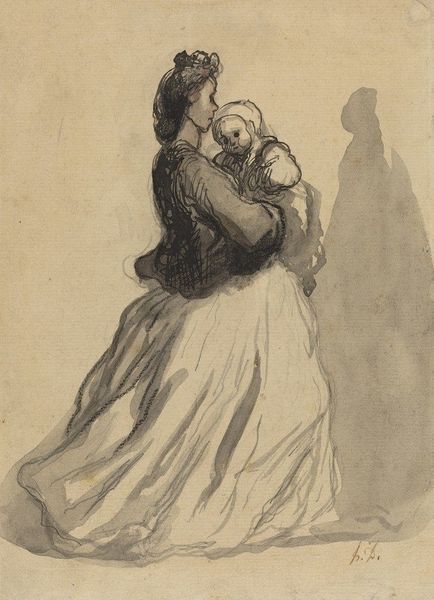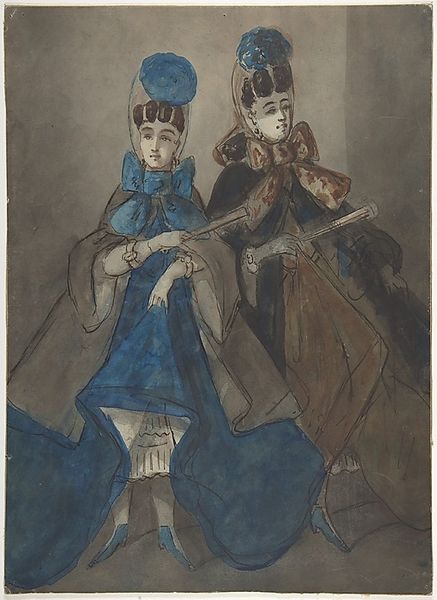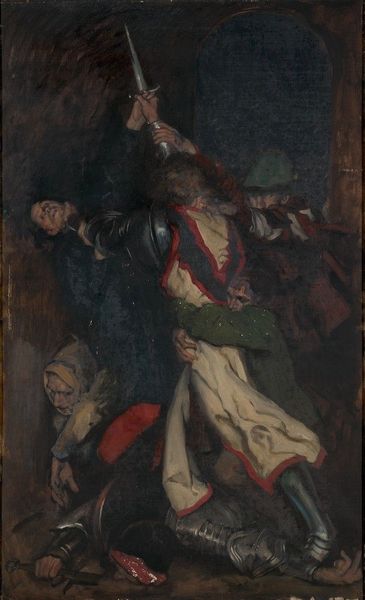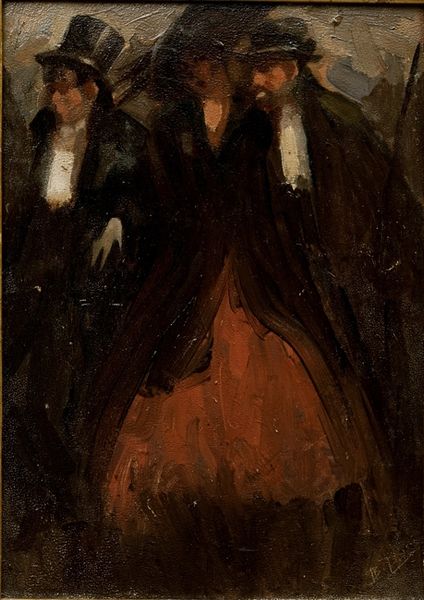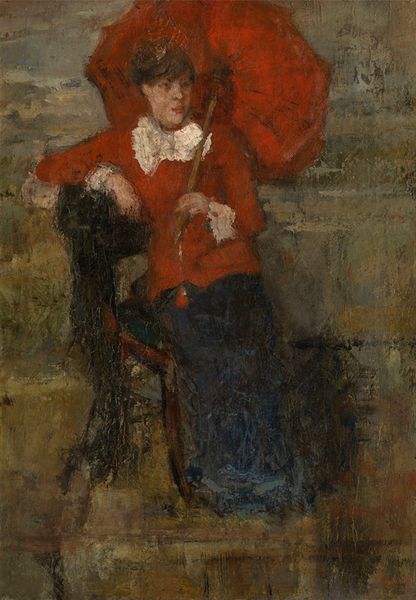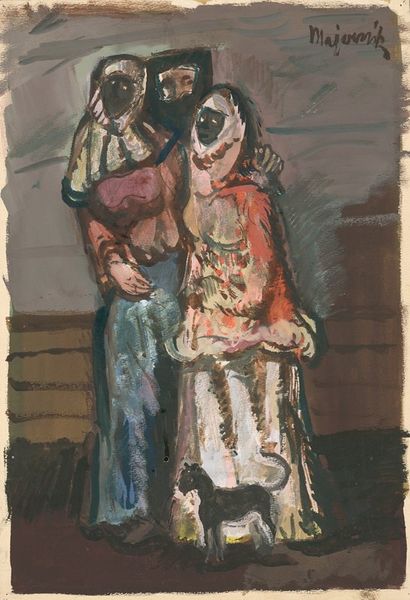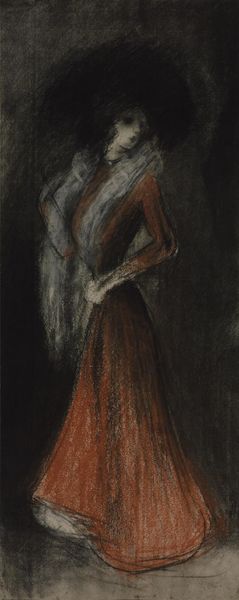
drawing, watercolor
#
drawing
#
figurative
#
charcoal drawing
#
figuration
#
watercolor
#
watercolour illustration
#
history-painting
Copyright: Public Domain: Artvee
Curator: This intriguing watercolor and charcoal drawing is titled “Unidentified scene, from Hamlet or Macbeth,” attributed to Edwin Austin Abbey. It is full of mystery. Editor: Absolutely. The figures seem to emerge from the very fibres of the paper. The execution—the stark contrasts—creates an atmosphere of high drama and a palpable sense of unease. Curator: Note how Abbey's economical application of washes allows the paper itself to participate actively. The limited palette accentuates the theatrical tension. It appears Abbey focused intently on the relationship between figure and ground, dissolving the background into a tonal field. The medium becomes the message. Editor: I'm especially struck by the tactile quality of the materials—the rough grain of the paper is visible beneath the washes. This hints at the specific economic conditions surrounding the production of paper itself. Abbey's decision to use cheaper or more readily available papers directly affects the accessibility of his art, both materially and metaphorically. Also, look at the draping of the clothing—there are significant hours of labour invested here! Curator: An insightful observation! Considering this choice of medium, coupled with a focus on a Shakespearean subject, invites reflection on the notion of the artist's "hand," their virtuosity, and the weight of art historical tradition. One might ask, does this piece deconstruct established methods and concepts, or does it further reinforce historical precedence? Editor: Or, conversely, think of the physical act of its making. This wasn't effortless! Abbey had to source charcoal, grind pigment, and spend numerous hours on the production of a history scene. This materiality is something far removed from ethereal philosophical discourse. Curator: Very compelling, the weight and labor against what many perceive as "mere aesthetics". Editor: I find these aspects integral to a complete assessment of Abbey's process here. Thank you for prompting a discussion beyond pure optics. Curator: And thank you for broadening my perspective.
Comments
No comments
Be the first to comment and join the conversation on the ultimate creative platform.
